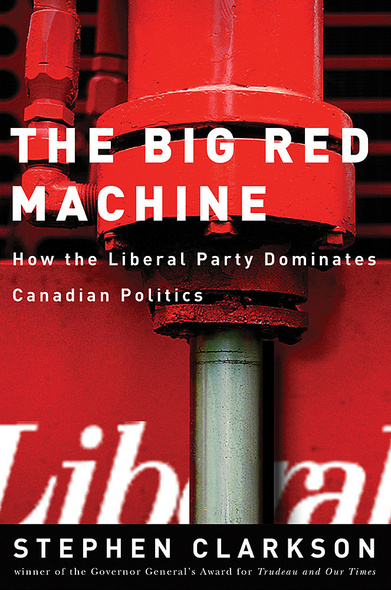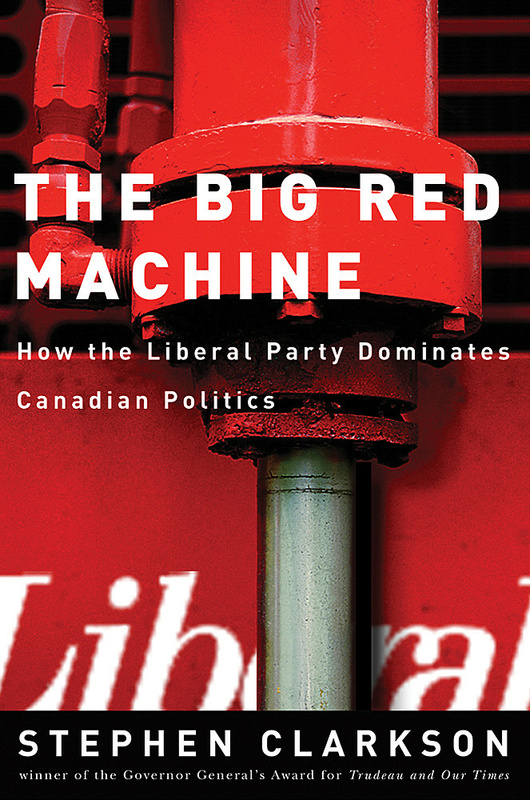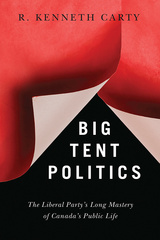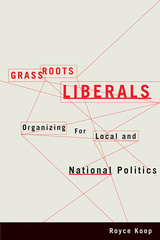
The Liberal Party of Canada has governed for 78 of the last 110 years, making it the most successful political party in the world. How has one party been able to dominate the polls during such a tumultuous sweep of history? Will it continue to win?
In The Big Red Machine, astute Liberal observer Stephen Clarkson tells the story of the Liberal Party’s performance in the last nine elections, providing essential historical context for each and offering incisive, behind-the-scenes detail about how the party has planned, changed, and executed its successful electoral strategies. Arguing that the Liberal Party has opportunistically straddled the political centre since Sir John A. Macdonald – leaning left or moving right and as circumstances required – Clarkson also shows that the party’s grip on power is becoming increasingly uncertain, having lost its appeal not just in the West, but now in Québec. Its campaigns now reflect the splintering of the party system and the integration of Canada into the global economy.
An ideal political primer, deftly written and filled with a wealth of fact and analysis, The Big Red Machine is a fascinating history of Liberal pragmatism, communication tactics, and dramatic changes in leadership style. "Even if the last century did not belong to Canada, Canada turns out to have belonged to the Liberal Party," Clarkson concludes. Although he foresees considerably less rosy prospects for Grits in the years ahead, the "big red machine" remains a formidable political force.
It is a popular political history, rich in detail, sparse in language, packed with backroom anecdotes, well-documented information, and the incisive political analysis that only an academic of Mr. Clarkson’s stature can bring to a controversial, political hot-seller.
University of Toronto political scientist Stephen Clarkson’s is an academic work of the best kind. He covers a mountain of analytic literature on the subject and does not talk down to his readership. Yet he yet writes in a comprehensible and coherent style. His is a work intended for the educated layman, as well as the political scientist. It will be useful to journalists, teachers, lawyers and anyone interested in an intelligent treatment of our national politics.
Tough reading aside, The Big Red Machine is nonetheless alive with clear, bright thinking. Clarkson ‘gets’ electoral politics. He avoids the journalistic trap of generalizing the popular will, and has a good feel for the ordering of the electorate into coalitions. Liberal campaign planners should read this book, especially the chapters about the Trudeau campaigns, which challenge the memory of a charismatic juggernaut with an evidence-based portrait of spotty organization, weak strategy and frequently indifferent performance.
Clarkson is particularly well targeted on the Liberal capacity to engage with ruthless focus and ballistic intensity when elections start to slip away ... As one enjoys this book’s analysis and intellectual framework, it seems particularly worthwhile to ask whether the story it documents of mechanics over ideas is, really, in some way, a story of Canada itself.
Preface: The Joy of Winning
Acknowledgments
Introduction: Party Systems and Liberal Leaders
Pierre Trudeau: Victory, Fall, and Recovery
1974 The Liberal Party and Pierre Trudeau: The Jockey and the Horse
1979 The Government’s Defeat, the Party’s Decline, and the Leader’s (Temporary) Fall
1980 Hiding the Charisma: Low-Bridging the Saviour
John Turner: From Disappointment to Despair
1984 The Dauphin and the Doomed: John Turner’s Debacle
1988 Election or Referendum? Disoriented in Defeat
Jean Chrétien: Power without Purpose
1993 Yesterday’s Man and His Blue Grits: Backwards into Jean Chrétien’s Future
1997 Securing Their Future Together
2000 The Liberal Threepeat: The Multi-System Party in the Multi-Party System
Paul Martin: Saved By the Far Right
2004 Disaster and Recovery: Paul Martin As Political Lazarus
Conclusion
The Liberal Party As Hegemon: Straddling Canadian History
Appendix
Notes
Bibliography
Index







